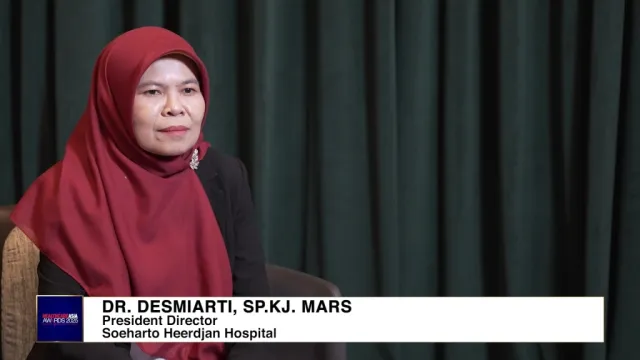Better healthcare decisions depend on better data collection
The huge advances seen in healthcare over the past 50 years are among the greatest achievements of modern science. As a result we are living longer than ever.
The downside to this is that whilst the average age of populations is growing older, chronic diseases are becoming more common and the medical needs of individuals are becoming increasingly complex. As a result demand for healthcare and pressure on healthcare budgets is becoming ever more burdensome.
Governments and healthcare managers acknowledge that the current trajectory is unsustainable.
As healthcare costs mount Singapore’s prime minister Lee Hsien Loong warned recently that “hard choices will need to be made” on where to spend and which drugs and procedures are considered cost-effective.
Adding to the challenge is that public expectations over healthcare are constantly growing, fuelling a culture of “more is better”. Patients expect that the latest medical treatments will be immediately available to them, and many doctors say they are often pressured to prescribe medicines, tests or procedures that patients do not need.
Especially in advanced economies, a significant and growing drain on health budgets is overtreatment and overconsumption of healthcare.
According to some estimates in the United States, for example, at least $200 billion is wasted annually on excessive testing and treatment. More significantly, studies have shown this approach can also cause actual harm to patients, leading to mistakes, injuries and contributing to an estimated 30,000 deaths annually.
How then can we continue to provide comprehensive healthcare yet also ensure that optimum choices are made that both maximise benefit to the patient and avoid unnecessary pressure on health budgets?
Treatment of chronic diseases in particular is becoming a major challenge, especially so in societies like Singapore that are rapidly ageing. Chronic diseases are fraught with complexity and uncertainties, caused by factors such as the diversity of symptoms, the disease’s unpredictable progression between different stages, and their tendency to be associated with other secondary conditions.
In medical decision-making, when so many uncertainties are involved, it is important to determine the optimal time for doctors to begin medical treatment.
In my work at NUS Business School, a major focus of my research is how analytical models used in business operations can be applied to healthcare decisions. In one recent study looking at chronic disease progression, we developed a framework related to a mathematical model known as a Markov Decision Process and then applied it to the different stages of a disease.
Markov Processes, named after 19th century Russian mathematician Andrey Markov, are often used to model resource optimisation decisions in situations where businesses and industries are faced with a range of random inputs and outcomes. For example, they can help businesses manage customer flow or hospitals to optimise patient scheduling decisions.
By taking elements of this process framework, our model of treatment decision-making takes into account the random factors influencing the progression of chronic diseases between different stages.
Intuitively many patients suffering from chronic diseases will want to begin treatment as early as possible after diagnosis, seeing this as offering their best chance. Being told to hold off and simply “monitor the disease” often leaves patients frustrated, feeling that they are being denied treatment or even that, for some reason, the doctor does not want to help them.
Our model however provides a mathematical rationale for holding back until a more optimal time as a better course of action.
One reason for this is that starting medical treatment too early, when the patient is in a relatively good health state, could result in unnecessary suffering and lower quality of life. Many treatments, such as chemotherapy for certain types of cancer for example, can be highly effective in combatting the disease but can also have severe effects on the patient’s quality of life because of the inherent toxicity of the powerful drugs involved.
On the other hand, there is the risk that delaying treatment until the patient is in a worse health state may lessen the treatment’s effectiveness or even rule it out having any impact at all.
The key therefore is to find the best treatment time that delivers an acceptable trade-off between quality of life and prolonging survival.
Given the right data, our model enables doctors to map out the likely progression of the patient’s illness from within any given stage of the disease, providing simple guidelines on when starting treatment will deliver the best outcome for the patient. Perhaps most importantly, the model also enables them to present this decision to the patient as a course of action that delivers maximum benefit to them.
Whilst there is more work to be done to refine the model for specific diseases, it shows the exciting potential that analytical modelling commonly used in non-medical industry situations could bring to making better healthcare decisions.
The crucial factor, however, is the quality of data.
As with any analytical model, the quality of the outcome it is able to produce is only as good as the quality of the data that goes into generating it. Yet currently in many cases gathering of medical data is patchy at best and frequently fails to provide a comprehensive picture.
Patients switch between GPs, consultants and specialists and whilst data is routinely captured in each instance it often ends up recorded in different formats, lacks consistency, and is stored across different unconnected systems.
As demands on healthcare grow and patient needs become more complex, this outdated and even haphazard approach to gathering medical data will be one of the main issues hampering efforts to control ballooning health costs.
An emerging solution to this might be found in the fast-developing technology of blockchain. Through its decentralised structure, blockchain offers the potential for sharing medical information with vastly-improved data availability, integrity and interoperability whilst also preserving patient security and privacy.
Recognising the potential opportunities some initiatives are already exploring this technology as a basis for new health information exchanges. Yet for the full benefits to be realised, such models will need to be adopted at scale, requiring governments to take the lead.
Our model shows that, with the right data, optimal decisions on medical treatment can be made swiftly and relatively simply bringing transformative effects on healthcare. But to be truly effective new approaches to organising the comprehensive and standardised collection of patient health data will be essential.

 Advertise
Advertise



